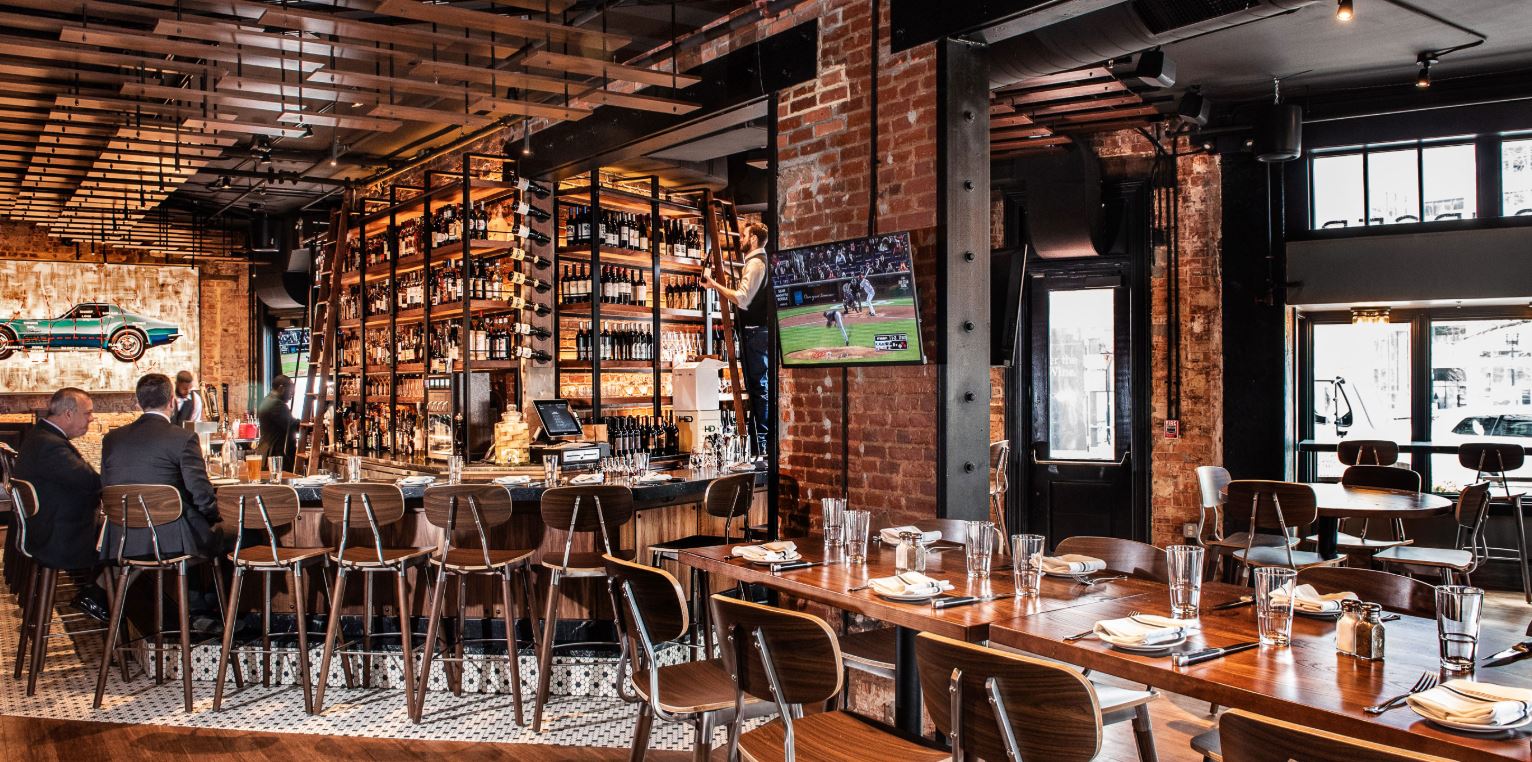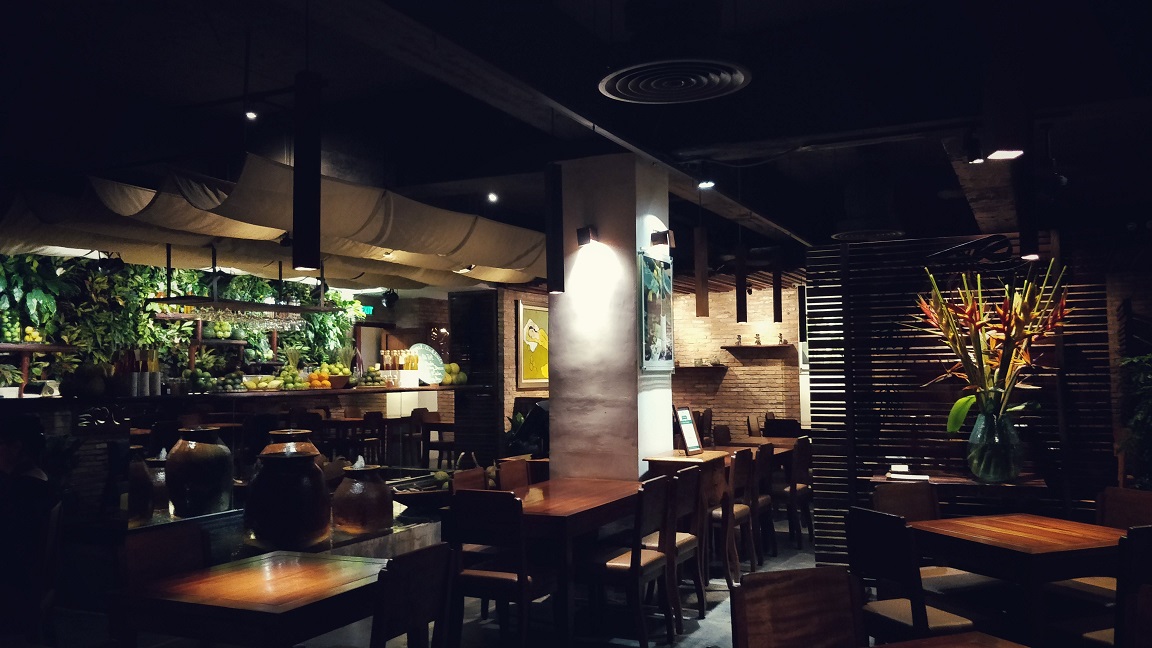Romantic Restaurants Islamabad: Perfect Dining Destinations for Couples
Wiki Article
Savor Genuine Asian Food With a Pan-Asian Twist for a Culinary Journey
Getting started on a culinary journey through genuine Eastern food, enhanced with a Pan-Asian twist, offers a special possibility to check out the abundant tapestry of tastes that define the area's varied cooking traditions. As you contemplate these attracting meals, consider the social stories and historic influences that shape them, each bite supplying a tale waiting to be discovered. best asian restaurant Islamabad.
Discovering Pan-Asian Flavors
In the world of global gastronomy, Pan-Asian cuisine stands apart for its remarkable variety and the harmonious interplay of tastes from different Eastern societies. This cooking approach commemorates the rich practices and unique components discovered throughout the continent, producing a tapestry of tastes that is both rewarding and fascinating. Trick to Pan-Asian food is its capability to stabilize contrasting flavors-- pleasant, salty, spicy, and sour-- while highlighting the quality and top quality of each active ingredient.From the umami-rich soy sauce of Japan to the fiery chili peppers of Thailand, Pan-Asian food supplies a considerable palette of flavors. These components are frequently combined in inventive ways, boosting meals with layers of intricacy. For example, the usage of aromatic herbs such as lemongrass and cilantro, usual in Vietnamese and Thai cuisine, adds a refreshing brightness to dishes, while the consolidation of coconut milk provides a luscious, rich appearance.
The focus on fresh fruit and vegetables and aromatic spices guarantees that each dish is not only a banquet for the taste buds but likewise for the senses. Pan-Asian cuisine welcomes restaurants to begin on a culinary journey, discovering the substantial and differed landscapes of Asian gastronomy with every bite.
Blend Meals to Attempt
While Pan-Asian food is commemorated for its conventional tastes, the modern culinary landscape is progressively accepting combination meals that blend these traditional components with impacts from other regions. This ingenious technique not only honors the abundant heritage of Oriental culinary arts but also introduces novel preference experiences that appeal to modern palates.
A prime example of such a fusion dish is the Korean-Mexican taco, where seasoned bulgogi beef is covered in a cozy tortilla, topped with kimchi and a zesty gochujang-infused salsa. This combination weds the vibrant, tasty tastes of Korea with the dynamic, fresh components of Mexican cuisine. Likewise, sushi burritos have actually acquired appeal, amalgamating the fragile creativity of Japanese sushi with the hearty, hand-held convenience of a burrito, usually featuring combination ingredients like tempura shrimp and avocado with a drizzle of wasabi mayo.
One more noteworthy dish is Thai curry ramen, which infuses the creamy, aromatic spices of Thai curry right into the soothing brew of standard Japanese ramen, producing an unified blend that entices the senses. These fusion recipes expand past mere novelty; they represent a culinary discussion in between societies, urging exploration and advancement on the planet of Pan-Asian cuisine.
Necessary Active Ingredients and Seasonings
To absolutely value Pan-Asian food, one need to understand the important components and spices that create its foundation. This varied cooking style attracts from a rich tapestry of Eastern customs, using a harmonious blend of structures and flavors. Trick components consist of soy sauce, fish sauce, and oyster sauce, which impart a savory umami depth important to Oriental dishes. Complementary to these are rice vinegar and mirin, lending a delicate acidity and sweetness.Fragrant components are crucial, with garlic, lemongrass, and ginger being common across various Pan-Asian recipes. These components offer an aromatic base that improves the complexity of tastes. Spices such as celebrity anise, cardamom, and cinnamon introduce heat and character, echoing influences from regions like China and India.

Food Preparation Methods and Tips
Grasping the art of Pan-Asian food needs knowledge with its unique food preparation methods, each contributing to the dynamic tapestry of flavors this cooking custom is commemorated for. Central to these techniques is the stir-fry, a quick food preparation method that protects the dietary integrity and vivid shades of components. Using a wok, the stir-fry technique enables also heat circulation, crucial for attaining the particular structure and flavor equilibrium of Pan-Asian recipes.Another essential technique is steaming, particularly prevalent in Chinese cuisine. This gentle approach keeps the all-natural tastes and nutrients of components, making it ideal for seafood and vegetables. Dumplings, a beloved staple, frequently benefit from steaming, causing soft, delicious appearances.
Cooking, likewise integral, imparts smoky depths to meals such as Oriental bulgogi or Japanese yakitori (pan asian restaurant Islamabad). This technique typically entails marinating ingredients, permitting flavors to pass through deeply before food preparation over an open fire or warmer
Lastly, understanding the art of balancing flavors-- wonderful, sour, salted, bitter, and umami-- is critical. Effectively layering these aspects can boost a recipe from regular to remarkable, using a complicated and satisfying cooking experience that embodies the significance of Pan-Asian food.
Eating Experiences Worldwide
Throughout the world, Pan-Asian food uses an exceptional eating experience, celebrated for its rich tapestry of flavors and lively discussions. This culinary phenomenon has gone beyond social boundaries, catching the hearts and tastes buds of food lovers worldwide. In cosmopolitan cities like New York, London, and Sydney, Pan-Asian restaurants function as fusions where cooking customs from Thailand, Japan, China, and past merge, offering restaurants with a diverse mix of recipes that highlight the region's diversity.The global charm of Pan-Asian food depends on its ability to supply both credibility and innovation. Chefs masterfully wed standard active ingredients such as lemongrass, soy sauce, and miso with contemporary methods, leading to dishes that are both refreshingly new and acquainted. This blend allows diners to start a culinary trip that respects heritage while accepting modernity.
Moreover, eating experiences are boosted via attentively made settings that show the principles of Pan-Asian looks. From minimal Japanese-inspired interiors to lively Thai-themed areas, each restaurant uses a special setting that enhances the culinary offerings. Because of this, customers are not simply consuming a dish but partaking in a social experience, making Pan-Asian dining an absolutely worldwide phenomenon.
Conclusion
The exploration of Pan-Asian cuisine provides a profound understanding of the intricate interaction of tastes and culinary customs across Asia. By embracing blend meals such as Thai curry ramen and sushi burritos, the culinary journey not only highlights the adaptability of standard active ingredients yet also showcases cutting-edge contemporary techniques. This gastronomic journey, enhanced by cooking techniques and essential seasonings, offers an one-of-a-kind possibility to value the cultural diversity and cooking artistry that define Pan-Asian food on a worldwide scale.Getting started on a culinary trip via authentic Oriental food, enhanced with a Pan-Asian twist, uses a distinct chance to discover the abundant tapestry of flavors that define the area's diverse culinary practices.In the world of global gastronomy, Pan-Asian cuisine stands out for its amazing diversity and the harmonious interaction of tastes from different Eastern societies. Secret to Pan-Asian cuisine is its ability to stabilize different flavors-- sweet, salty, spicy, and sour-- while highlighting the quality and high quality of each active ingredient.

Report this wiki page